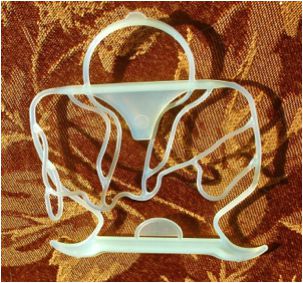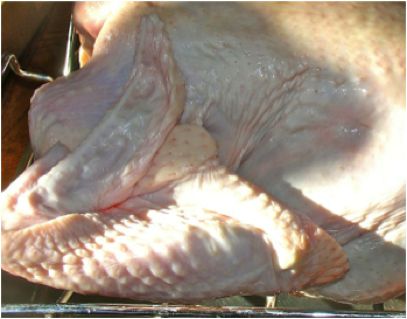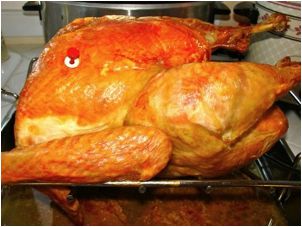
No Muss No Fuss Turkey
Contrary to popular belief, you do not need to rise at three in the morning to cook your turkey. Well, maybe if you’re cooking for 100 people or serving it for breakfast. While some people subscribe to the notion of a long, slow roast, I find that turkey does very well at 400 degrees and it doesn’t take five or six hours to cook it.
Roasting a turkey can be a mammoth production involving stuffing (no longer recommended anyway), sewing, tying, basting and more. You can season turkeys with lemon, thyme, rosemary, combined herbs, apples, onions, shallots, garlic . . .
The truth is that those of us who like turkey are generally perfectly happy with just plain . . . turkey. So here’s how I do it.
A quick note about brining. Read the label. Turkeys that have had no solution added whatsoever are better when brined first. Brining allows salt to penetrate the meat to make it softer. READ THE LABEL! If you buy a Kosher turkey or a turkey with an added solution (which is most turkeys), you should not brine it.
A word about pans. I use a rack inside of a roasting pan. These run from $16 to $150+. In a pinch you can also use the roasting pan and rack that came with your oven. Not perfect, but I’ve done it. Be very cautious if you use a disposable pan. They may buckle under the weight of the turkey.
It takes three days to thaw a turkey in the refrigerator. If you are reading this on the day you want to cook your turkey and it’s frozen solid, call the Butterball help line 1-800-BUTTERBALL (1-800-288-8372).
You will need ~
1 10-14 pound turkey
salt (optional)
pepper (optional)
a pan in which to roast it
two clean kitchen towels
1. Preheat oven to 400.
2. Now the hardest part. There’s probably a hook in the bottom of your turkey holding the legs together. Sometimes they’re plastic, sometimes metal. They’re usually difficult to remove, even harder if the turkey is still partly frozen.
Wiggle the legs out of the hook.
Sometimes the tail is tucked up underneath. Untuck it.
Most of these gizmos have little wings jutting out sideways (at bottom of photo) that hook into the meat of the turkey. You can try squeezing the sides of the little gizmo together (this sometimes works if it’s made of metal). I usually have more luck pulling one side out at a time. The trick is to push the side of the hook inward -- toward the other side. Once that one comes out, repeat with opposite side. Okay, got that? If you’re looking at the little hook gizmo, you want to push the right side to the left. And then the left side to the right. All these are a little bit different, so don’t despair if yours doesn’t look exactly like this.

The rest is easy. No kidding!
3. The neck is usually inside the bottom cavity, and the giblets are usually inside the top cavity. Remove neck and giblets.
4. Rinse the turkey and pat dry with paper towel.
5. Salt and pepper turkey skin if you feel like it. Rub it around with your hand.
6. Fold the wings in back of the turkey by bending the last section of the wing behind the turkey. (see picture)

7. Place the turkey in the rack breast down.
8. Roast 45 minutes.
9. Remove from oven. Grab the bottoms of the legs with folded kitchen towels to protect your hands. Get a good grip and watch out for any hot liquids that are in the cavity because they will splash. Lift the legs up and flip the turkey over on its back.
10. Return to oven breast up and continue roasting. The smaller it is, the sooner it will be done. I usually set the timer for 1 hour and check it periodically after that. Expect it to take a total of 2 to 2 1/2 hours depending on the size.
11. The USDA recommends a temperature of 165*.
12. Let rest for 15 or 20 minutes before carving.
ENJOY!
*Safety information from USDA.
A whole turkey is safe when cooked to a minimum internal temperature of 165 °F as measured with a food thermometer. Check the internal temperature in the innermost part of the thigh and wing and the thickest part of the breast. For reasons of personal preference, consumers may choose to cook turkey to higher temperatures.
If your turkey has a "pop-up" temperature indicator, it is recommended that you also check the internal temperature of the turkey in the innermost part of the thigh and wing and the thickest part of the breast with a food thermometer. The minimum internal temperature should reach 165 °F for safety.
